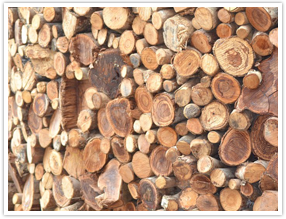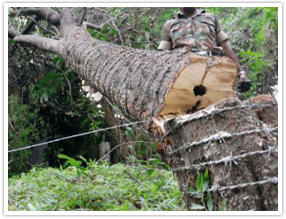| CALL US ON: +91 9900066400 FOR UPDATES AND LATEST NEWS |
|
|
Sandalwood
 Sandalwood, santalum album, is native to the Western Ghats of India. It is a Hemiparasitic, medium-sized tree. Indian sandalwood is a threatened species. It is currently cultivated in Australia, besides several other tropical countries. When the sandalwood plants are young, they are parasitic in nature, but later on they grow independently. Sandalwood was available in forests until 2000, and it was government property. High demand resulted in illegal harvesting and all the trees just vanished. Finally, the government changed its policy to allow its cultivation and harvesting, resulting in many farmers taking up its commercial cultivation in Karnataka, Kerala and Tamilnadu, and even in non-traditional zones of North India.
Sandalwood, santalum album, is native to the Western Ghats of India. It is a Hemiparasitic, medium-sized tree. Indian sandalwood is a threatened species. It is currently cultivated in Australia, besides several other tropical countries. When the sandalwood plants are young, they are parasitic in nature, but later on they grow independently. Sandalwood was available in forests until 2000, and it was government property. High demand resulted in illegal harvesting and all the trees just vanished. Finally, the government changed its policy to allow its cultivation and harvesting, resulting in many farmers taking up its commercial cultivation in Karnataka, Kerala and Tamilnadu, and even in non-traditional zones of North India.
 In commercial cultivation, about 400 trees are recommended per acre in 10x10 spacing. Sandalwood trees grow up to a height of 20 to 30 ft. They mature by 20 years and can live for 100 years. The older the tree, the better will be its oil content. It requires dry, humid climate of deciduous forest range for fast growth. Soil temperature plays a major role in the formation of its oil. The wood is heavy and yellow in colour. Essential oil is extracted through distillation or extraction. Both the wood and the essential oils produce a distinctive fragrance that has been highly valued for centuries. Now, its oil is extensively used in the perfumery industry, but its non-availability and high prices continue to be challenges.
In commercial cultivation, about 400 trees are recommended per acre in 10x10 spacing. Sandalwood trees grow up to a height of 20 to 30 ft. They mature by 20 years and can live for 100 years. The older the tree, the better will be its oil content. It requires dry, humid climate of deciduous forest range for fast growth. Soil temperature plays a major role in the formation of its oil. The wood is heavy and yellow in colour. Essential oil is extracted through distillation or extraction. Both the wood and the essential oils produce a distinctive fragrance that has been highly valued for centuries. Now, its oil is extensively used in the perfumery industry, but its non-availability and high prices continue to be challenges.

![]()
All rights reserved © | Privacy policy








